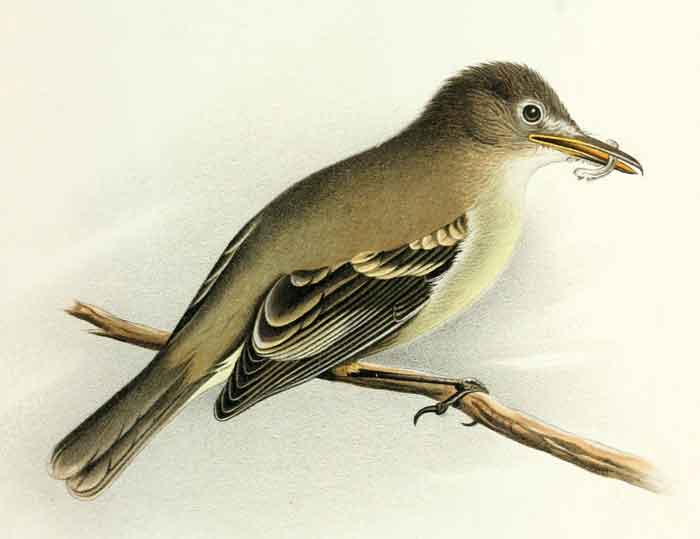
Superregnum: Eukaryota
Regnum: Animalia
Subregnum: Eumetazoa
Cladus: Bilateria
Cladus: Nephrozoa
Superphylum: Deuterostomia
Phylum: Chordata
Cladus: Craniata
Subphylum: Vertebrata
Infraphylum: Gnathostomata
Superclassis: Tetrapoda
Cladus: Reptiliomorpha
Cladus: Amniota
Classis: Reptilia
Cladus: Eureptilia
Cladus: Romeriida
Subclassis: Diapsida
Cladus: Sauria
Infraclassis: Archosauromorpha
Cladus: Crurotarsi
Divisio: Archosauria
Subsectio: Ornithodira
Subtaxon: Dinosauromorpha
Cladus: Dinosauria
Ordo: Saurischia
Cladus: Theropoda
Cladus: Neotheropoda
Infraclassis: Aves
Ordo: Passeriformes
Subordo: Tyranni
Infraordo: Tyrannides
Parvordo: Tyrannida
Familia: Tyrannidae
Genus: Nesotriccus
Species: Nesotriccus ridgwayi
Name
Nesotriccus ridgwayi Townsend, 1895
Holotype: MCZ 131691
Type locality: Cocos Island, Costa Rica.
References
Townsend, C.H. 1895. Birds from Cocos and Malpelo Islands, with Notes on Petrels obtained at sea. Bulletin of the Museum of Comparative Zoology at Harvard College 27 no.3: 121–126; pl. 1–2. Cambridge. Mass. USA. BHLReference page. Original description p. 124 BHL pl. 2 BHL
Vernacular names
English: Cocos flycatcher
español: Mosquerito de la Isla del Coco
The Cocos flycatcher (Nesotriccus ridgwayi) is a species of bird in the family Tyrannidae, and the only species in the genus Nesotriccus.[3]
It is endemic to Cocos Island off Costa Rica. This tyrant flycatcher is a small (13 cm) grey bird with a long bill. Its natural habitats are subtropical or tropical moist lowland forest, subtropical or tropical swamps, subtropical or tropical moist montane forest, and subtropical or tropical moist shrubland.
It is thought to be threatened by introduced species, particularly rats and feral cats which prey on the species and pigs which destroy habitat. There is no evidence yet of a decline, but is listed as vulnerable due to its tiny range.
References
BirdLife International (2020). "Nesotriccus ridgwayi". IUCN Red List of Threatened Species. 2020: e.T22699191A179473022. doi:10.2305/IUCN.UK.2020-3.RLTS.T22699191A179473022.en. Retrieved 12 November 2021.
Discover Life - Nesotriccus ridgwayi
Thomas M. Brooks; John D. Pilgrim; Ana S. L. Rodrigues & Gustavo A. B. Da Fonseca (2005). "Conservation status and geographic distribution of avian evolutionary history". In Andy Purvis; John L. Gittleman & Thomas Brooks (eds.). Phylogeny and Conservation. Conservation Biology. 8. Cambridge University Press. pp. 267–294. ISBN 978-0-521-82502-3.
Retrieved from "http://en.wikipedia.org/"
All text is available under the terms of the GNU Free Documentation License

